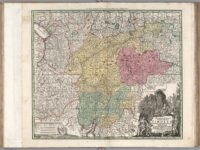The Dolomites before the Dolomites: History of a border environment (16th-17th centuries)

The study of the Alpine world in the early modern period has long been burdened by various historical prejudices, assuming that contemporaries held a negative perception of this environment due to its alleged peripheral location, dangerousness and economic weakness. This view is particularly true of the Dolomites, whose history has only been a subject of research following their supposed discovery at the end of the 18th century.
The project aims to question the historical representation of the Dolomites and the Alps in general by drawing on a variety of sources. To this end, it will reconstruct the social and cultural practices through which various actors, both at local and regional level, connected to the dolomitic environment, its natural features, and its exceptional border location.
A multi-faceted historical reconstruction is made possible by analysing many different practices that are representative of the diverse relationships established with this environment between the 16th and 17th centuries: regional and local cartographic and topographical projects; processes of spatial definition and border demarcation along the dolomitic ridges and cliffs; the formation of collective identities and, finally, economic practices linked to the particular environmental and climatic conditions.
PhD Candidate: Andrea Pojer
PhD Supervisor: Andrea Bonoldi
ISIG Supervisor: Massimo Rospocher
Image: David Rumsey Map Collection, David Rumsey Map Center, Stanford Libraries

